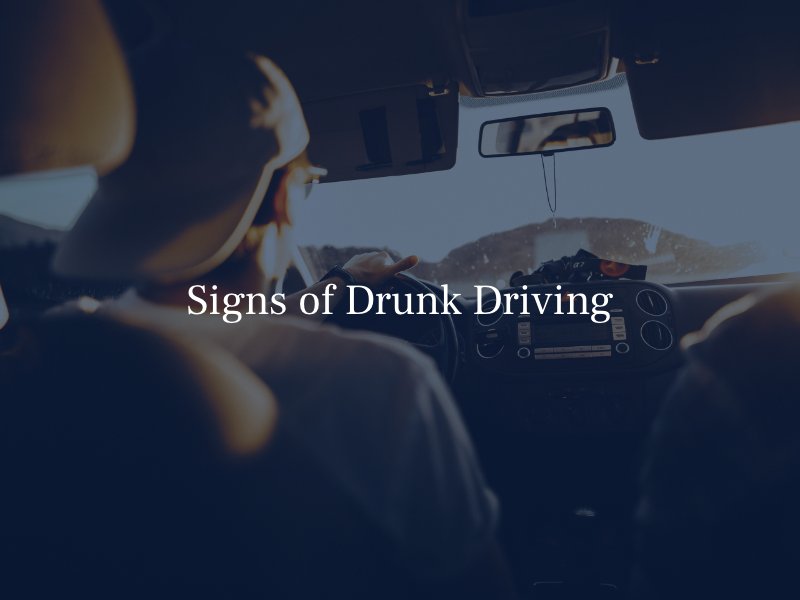Signs of Drunk Driving to Look Out For
December 18, 2023 Posted In Car Accidents
Drunk drivers pose a serious threat to road safety, leading to numerous accidents, injuries, and fatalities each year. To stay safe, it is critical to know the signs of drunk driving and what to do next.

Swerving
One of the most prominent signs of driving behavior is swerving. Driving in a straight line is easy when you are sober, but alcohol impacts a person’s ability to concentrate and focus on the road in front of them.
Excessive Braking and Slow Acceleration
Intoxicated drivers will typically overcompensate by braking early and more frequently or driving slower than the speed limit. Slow acceleration and driving cause a hazard to others on the road who don’t expect someone to drive so conservatively, especially if on a freeway.
Hugging the Centerline
To avoid swerving, drunk drivers often overcompensate by straddling or driving too closely to the center line.
Tailgating
If another car is constantly tailgating you even when you slow down or speed up, and there are other open lanes, it may be a sign that the driver is under the influence. Drunk drivers often try to hide the fact that they are impaired by persistently following the vehicle in front of them.
Traffic Violations
When a driver is intoxicated, they will unlikely follow traffic laws. Even if they are basic, such as turning on headlights, using signals to turn, driving in the appropriate directions, stopping at an intersection, etc.
Unusual Braking Patterns
Drunk drivers may exhibit unusual braking patterns, such as excessive braking, inconsistent use of turn signals, or stopping abruptly without cause. These erratic behaviors can be red flags of impaired decision-making.
What to Do if You Spot a Drunk Driver
If you believe you have spotted a drunk driver, here is what to do next:
- Keep your distance. Pull over to safety or put as much distance as possible between you and the intoxicated driver. That way, you are not put at risk by their erratic driving.
- Call 911. Call and notify the police. Be prepared to give your location, the make, model, and color of the vehicle, the license plate if you memorized it, and a description of the driver, if possible. The sooner you contact the police, the more likely they will be able to apprehend the drunk driver and prevent a collision.
- Choose an alternative route. If you are worried about catching up to the drunk driver again on the road, check if you can take a different route.
What to Do if You Are Hit by a Drunk Driver
Try to Remain Calm
Try your best to stay calm so that you can make rational decisions.
Call 911
Even if no one is injured, notify the police and mention that you believe the driver is intoxicated. Officers will arrive and assess the situation. Medical responders will check if you need to be taken to the hospital.
Take Photos and Video
If you are not immediately transported to the hospital, try to stay at the scene and capture photos and video of the vehicles’ positions, their damage, the surrounding area, and your injuries.
Ask For Contact Information
The other driver may not be coherent, or it may be best to get their contact and insurance information from the police report. If there were witnesses, ask how to contact them. Their statements can be critical to your insurance claim.
Get Medical Attention
See a doctor immediately after leaving the scene. Some severe injuries can have delayed symptoms. Additionally, it is crucial to have medical records that link your injuries to the drunk driver’s actions.
Speak to an Attorney
Consult a trusted Riverside Car Accident Attorney. They can advise you on your rights, advocate for you, and ensure you recover full and fair compensation.